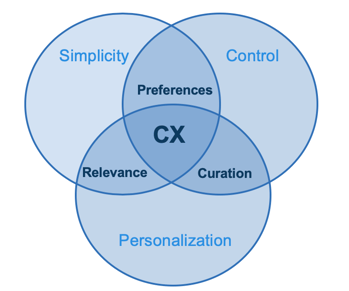My husband and I are very different shoppers. Whether in a big box store or looking at new cars, he wants his phone to be his digital assistant while I’m scanning for an available salesperson.
He avoids ‘the approach’ of a human, preferring to compare products or check prices on the brand’s mobile site or app. He studies up on what he needs in the physical location. He wants to be left alone, until he doesn’t want to be left alone … and then he wants help right away.
I’m the opposite. I prefer to be greeted up front. I like it when someone is there at The Home Depot entrance asking what I need help with today and directing me to the right aisle. If an associate is not available, I’m the customer dialing the toll-free number before menu-hopping across the mobile website to look for store FAQs which may or may not exist, because for me it’s the faster and friendlier way to go. Then I take my time making an informed decision in the store.
But whether it’s his digital-first, in-location shopping preference or my human-centric approach, we both have one thing in common: the desire for a simple and yet personalized purchase experience, with ourselves at master control.
1:You
Delivering a 1:You personalized communications strategy allows my husband and I to achieve our own shopping missions, our own ways. But how do you accomplish that in a store?
Location-based marketing technologies make it easier to identify opt-in mobile app users as they enter the drive-through, walk in a car dealership or depart a bank branch. Near field messaging can send contextual 1-way or 2-way greetings to customers asking what they need assistance with today while supplying relevant offers and preventing frustration in real time.
Guest recognition systems are able to notify a store manager when VIP customers have entered a location, accurately detect movement dynamics and determine the length of visit. 1:You is what marketers strive to achieve.
The Great Divide
The Alliance Data Analytics & Insights Institute recently published a consumer study comparing what brands believe customer needs are with their actual beliefs on the brand experience.
This study, The Great Divide, found that the challenges consumers expect brands to solve for are changing. For example, consumers rated simplicity as their most important need (out of thirty-one studied), and it was determined that brands significantly under-deliver on simplifying the shopping experience.
Personalization was important to consumers, but recommendations based on past history were deemed less critical than customer desire to have power over the content, frequency and type of communications they receive.
To ensure you’re personalizing communications to your customers and meeting their expectations, consider the role of preferences, curation and relevance.

Let’s further explore.
Preferences
The old MySears preference center has to be my all-time favorite: ‘tell us what you want … what you really, really want’. Why? Because it was an opportunity for the customer to share their true desires (wants and needs).
Sure, it might have been over-engineered with its extensive data capture system, but it served as an effective source for modulating communications.
Today’s preference centers’ data capture options may be less comprehensive, but the essential customer thirst for power to reduce the noise remains. New technologies supporting sales, the call center and mobile app provide customers the ability to establish their preferences in overt, covert and ‘self-teaching’ ways that define experiences while filtering the unbidden.
Curation
At the nexus of personalization and control is the concept of curation. For example, Macy’s new Story boutiques curate commerce to focus on tailoring selection and providing more customer sovereignty over the number of items their able to view at one given time.
As customers, we want as much control over our buying experiences as we do adjusting our iPhone settings. My orthodontist offers thirteen different colored elastics to select from while my colleague’s dentist sends a text the day before each appointment asking what flavor surgical gloves he wants (bubblegum, always bubblegum, he tells me).
According to the The Great Divide, offering in-the-moment choice control is rated above use of name greetings or referencing purchase history when it comes to getting personal.
Relevance
Where personalization meets simplicity is the expectation of relevance.
Greeting a customer – whether digitally via in-app SMS or in person – when they approach or enter a store is a key purchase journey inflection point.
According to iVend Retail’s Global Shopper Trends Report 2019, customers prefer to receive communications at these pivotal points of decision (with geolocation targeting being a key mechanism to deliver the assistance in context).
Unique offers, ratings and reviews, and loyalty reminders are especially relevant when localized to a store visit. In summary, customers want brands to save them time and make shopping more convenient. New technologies that offer a fun and enjoyable experience while making life easier is what matters most.
So while my husband and I may enter a store together, our in-location journeys are very different; regardless, when we each achieve our missions, our preferred personalized way, our passion towards the brand is enhanced.
